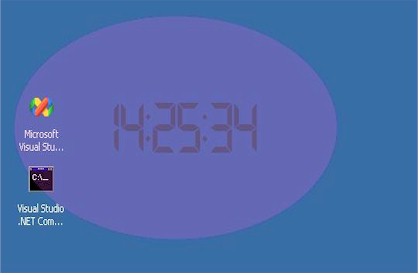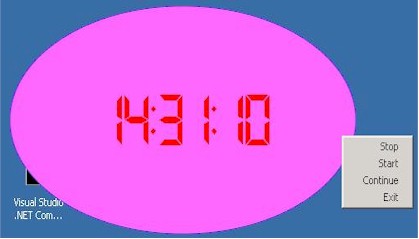This application demonstrates two simple techniques that beginners might find useful in developing creative new looks for Windows applications.
The first technique is that of a shaped Windows form and is an implementation of a Microsoft article: (http://msdn.microsoft.com/library/default.asp?url=/library/en-us/dv_vstechart/html
/vbtchshapedwindowsformscontrolsinvisualstudionet.asp)
The second technique is also from Microsoft. I saw it in a Webcast entitled "Debugging .NET Applications with Visual Studio .NET" by Shaykat Chaudhuri. He demonstrated a transparent Windows Forms timer application. Using this application, he showed how he was able to time his presentations for proper length while viewing through the transparent timer at his Power Point cells. I was impressed. I don't know if the source code is available for this demo, but it turns out this technique very simple to achieve in Visual Studio .NET.
I've combined these two simple concepts in the attached demo. The demo is written in C# and Windows Forms and was tested in Windows 2000 using VS Ver. 7.0.9466 and the .NET Framework Ver. 1.0.3705.
Shown below, is a clock application running on the desktop in its transparent mode. The app can be dragged and positioned with the left mouse button while transparent.

The right mouse button brings up a context menu with various settings and an exit item ( providing basic title bar functionality ). It also brings up the opacity factor in steps as the application "un-cloaks" for use. When a menu item is selected, the application "fades-out" back to the transparent mode (or terminates).

The application included (winShapeSevenSegmentLED.exe) uses the seven segment "retro" digital clock in Charles Petzold's book "Programming Microsoft Windows with C#" ISBN: 0-7356-1370-2. I didn't include the source code as it is copyrighted but if you have the book you can uncomment the #define, add his SevenSegmentClock class to the project, and recreate the application shown above. Without this code, only the basic shaped form, menu items and opacity functionality is provided.
Using uncommonly shaped and transparent objects might make an interesting desktop for a child. She would be able to see all running applications at once and in fun compelling shapes.